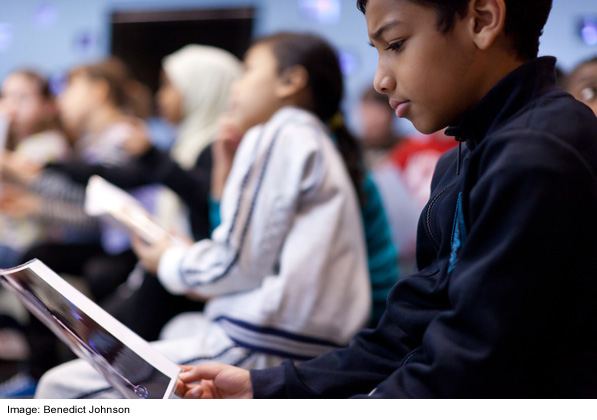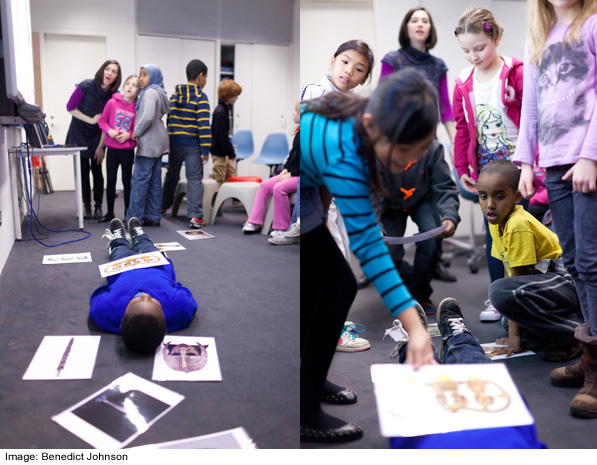Designing Open Exhibits for the British Museum
This week, we finalized our designs for two prototype exhibits for the British Museum. In discussing them with the Open Exhibits team, our priority was how to design exhibits that are simple to produce (without ActionScript programming) yet deliver a rich and satisfying user experience. The first exhibit is for a school workshop in the Samsung Digital Discovery Centre, the ICT education space where I teach and the hub of the museum’s digital learning programs for children. The second is for adult visitors to explore the work of the museum’s research scientists in a new laboratory. I’ll cover the first exhibit today.
Reconstructing an Early Medieval Tomb
Sutton Hoo Headline is a popular session for elementary schools. It is a video production workshop in which children (age 7-11) make their own news reports about an early medieval burial ground. Children go to the galleries to collect information on mobile phones and then come back to the Centre where they plan, script and film their reports. In the opening plenary, we re-enact the funeral of the Anglo Saxon noble who was buried in the tomb.
A volunteer lies down on the floor, and children place pictures of artefacts on the floor around him or her. The challenge is to place the picture in the correct location according to an illustrated reconstruction of the tomb. This activity familiarizes children with the types of objects in the burial and prompts discussion about them. For example, were objects placed closest to the body more valuable to the person who died, and if so, why?
Adapting a Physical Activity
Our first prototype exhibit adapts this physical activity to a multitouch table. Instead using printed pictures, children will move virtual objects to their correct locations inside the tomb. The screen background will be the illustrated reconstruction that children now look at on a white board. Doing this activity on a multitouch table has advantages:
• Children will have access to metadata about the artefacts (name, description)
• They can interact with more than one object
• With the illustrated reconstruction directly behind the activity space, the spatial relationships between the objects and the tomb will be clearer
• The scale of the objects will be more accurate
I also anticipate that, on the table, the activity will continue to work well for kinaesthetic learners – those who understand and learn through physical movement. One of the strengths of multitouch and gesture in education is that these styles of interaction address the needs of kinaesthetic learners who need to “do” rather than be told. I am frequently surprised by the ways in which technology assists learners who benefit from this physical, hands-on approach.
Doing it in Open Exhibits
Our plan is to use the existing Collection Viewer to create this exhibit. It already contains a number of elements that we need. Images (and other media) appear randomly on the screen to start and can be sorted and moved by dragging. Similarly, in our exhibit, pictures of objects will at first appear out of place and children will drag them to the correct locations. Touching a button on a media element displays related metadata, which needs to work in our exhibit too.
We should be able to implement all the basic functionality in Creative Markup Language (CML) by replacing the existing media with our own and making a few other minor modifications. In future, we could add more complex functionality with ActionScript to give live feedback when children put the object in the correct spot. For now though, we will keep it simple.
by Shelley Mannion ![]() on August 17, 2012
on August 17, 2012

